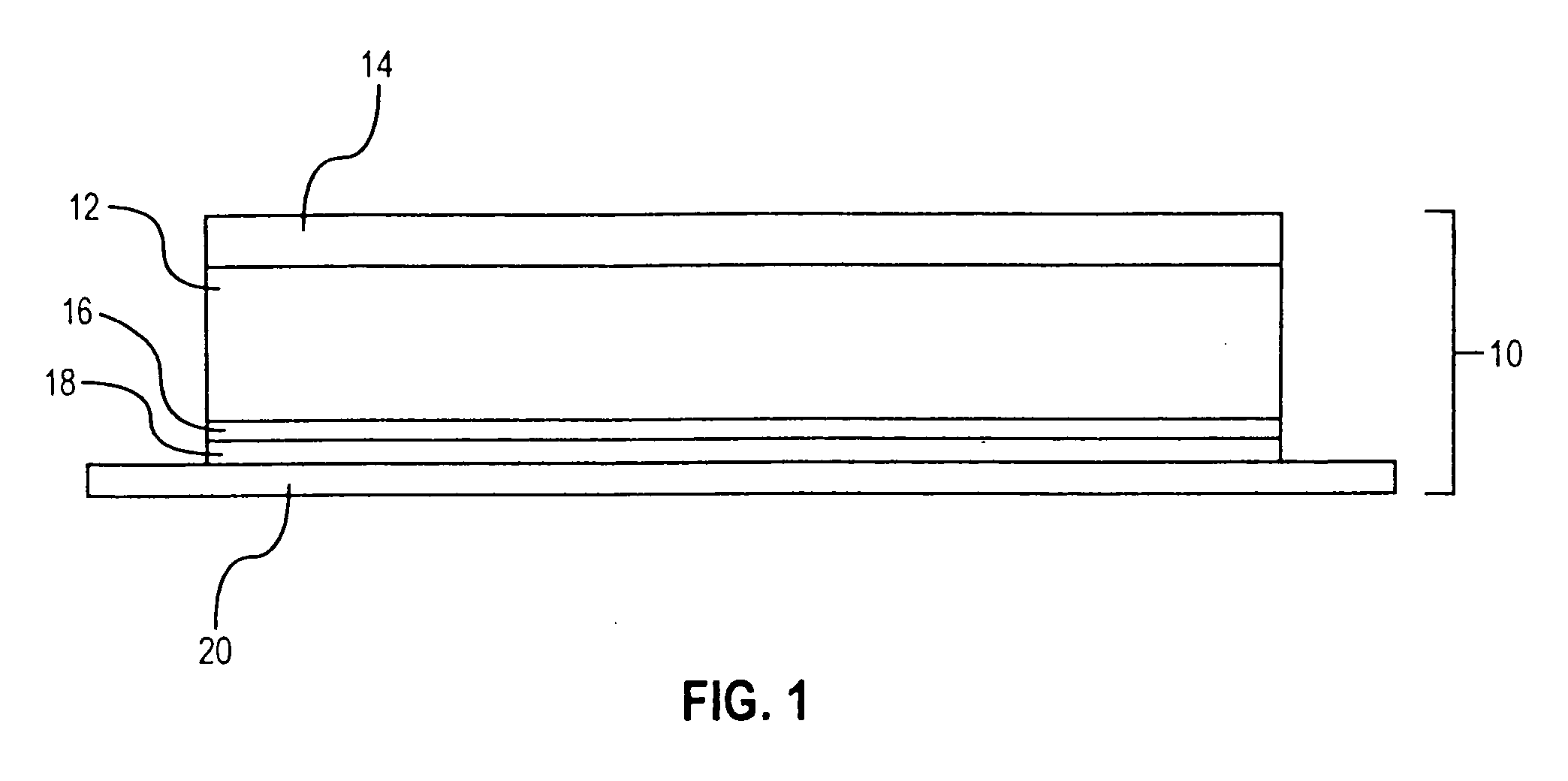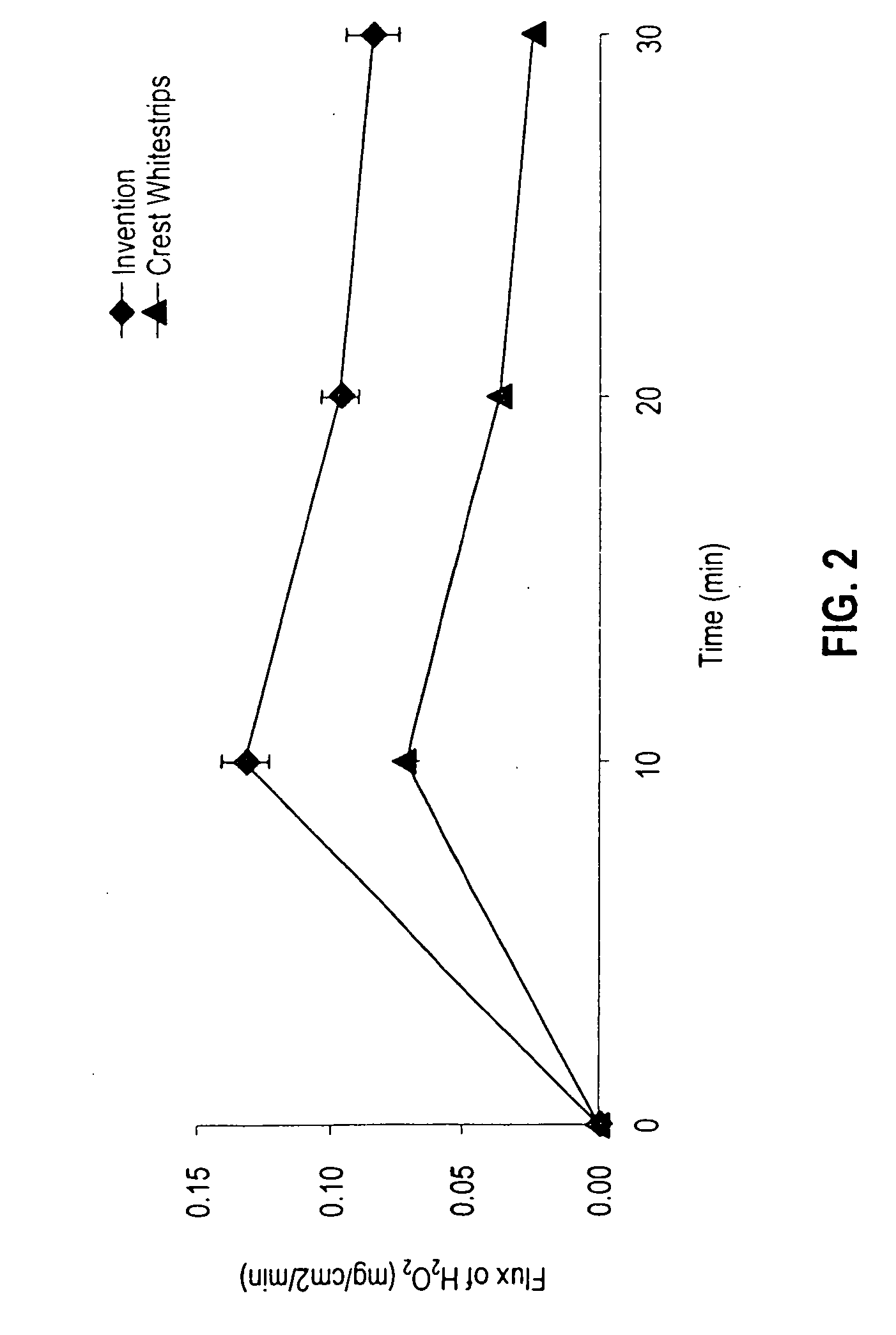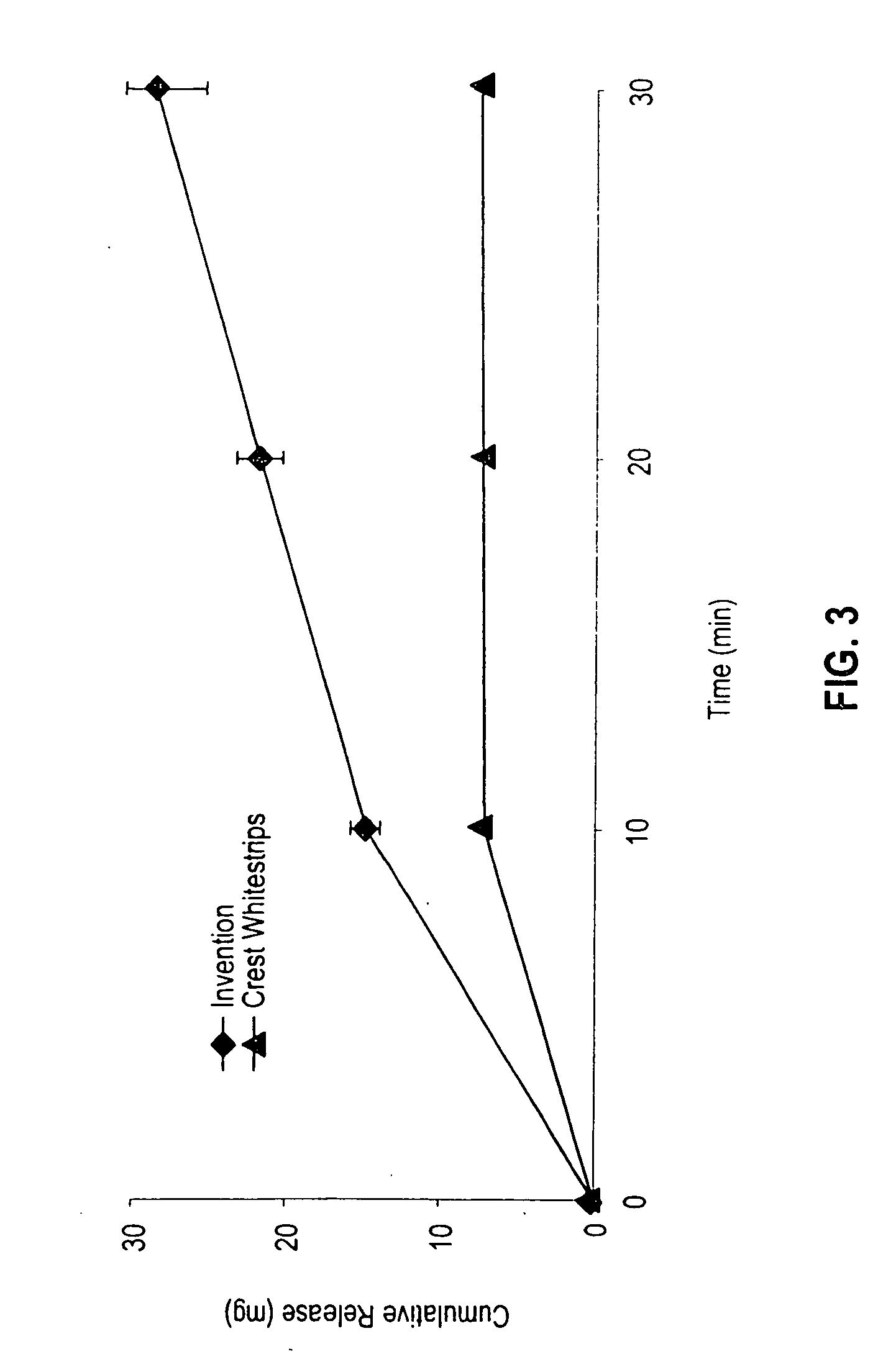Sustained release tooth whitening formulations and systems
- Summary
- Abstract
- Description
- Claims
- Application Information
AI Technical Summary
Benefits of technology
Problems solved by technology
Method used
Image
Examples
example 1
[0102] A tooth whitening formulation of the invention containing the following components was prepared using a hot melt processing method:
Eudragit RL PO or Eudragit E-PO, 19.00 g (38.00 wt. %)
Eudragit L100-55, 1.89 g (3.79 wt. %)
Triethyl citrate, 10.15 g (20.31 wt. %)
Kollidon CL-M, 7.50 g (15.00 wt. %)
Sodium percarbonate, 8.81 g (17.63 wt. %)
Carbamide peroxide, 2.64 g (5.28 wt. %)
[0103] The sodium percarbonate (obtained from Spectrum) was micronized using a Bell-art Products Micro Mill and sieved through an ASTM E-11 standard sieve #270 (53 microns; 0.0021″). The two Eudragit copolymers, the triethyl citrate (Morflex), and the Kollidon CL-M were weighed into a stainless steel tumbler and hand-mixed. The mixture was then transferred into a Brabender extruder, and mixed for 20 minutes at 80 rpm and a temperature of 130° C. Mixing speed was then adjusted to 5 rpm, and the carbamide peroxide and micronized sodium percarbonate were then added into the extruder. Mixing speed ...
example 2
[0104] A two-layer tooth whitening system of the invention, in which the tooth whitening formulation of Example 1 serves as the inner tooth whitening layer, was prepared as follows.
[0105] The outer layer of the tooth whitening system was prepared using the following components:
Eudragit RS-PO, 36.03 g (72.06 wt. %)
Triethyl citrate, 10.15 g (20.31 wt. %)
Sodium percarbonate, 2.94 g (5.88 wt. %)
Carbamide peroxide, 0.88 g (1.76 wt. %)
[0106] The Eudragit RS-PO and triethyl citrate were mixed by hand, and the mixture was then transferred into a Brabender extruder. The components were mixed for 20 minutes at 80 rpm and a temperature of 130° C. Mixing speed was then adjusted to 5 rpm, and the carbamide peroxide and sodium percarbonate (micronized as in Example 1) were then added into the extruder. Mixing speed was then increased to 35-50 rpm and mixing was carried out for an additional 10 minutes at a temperature not exceeding 65° C.
[0107] The mixture so provided and the formulati...
example 3
[0109] The in vitro release of hydrogen peroxide from a tooth whitening system of the invention was compared with the hydrogen peroxide release profile exhibited by a commercial product, Crest Whitestrips™ (a product of the Procter & Gamble Co., Cincinnati, Ohio and referred to as the “Crest product”). The Crest product contains 5.3% hydrogen peroxide in a Carbopol 956 gel on a thin polyethylene film. The tooth whitening system of the invention was prepared by extruding the formulation of Example 1 onto a polyethylene backing to provide a tooth whitening layer approximately 0.35″ thick. The formulations were allowed to release peroxide in water, and the amount of peroxide released was measured at ten-minute intervals using standard analytical techniques.
[0110] The flux of hydrogen peroxide released (in mg / cm2 / min) was plotted for each system evaluated. As may be seen in the graph of FIG. 2, each of the systems exhibited maximum flux after ten minutes. At each measurement point, how...
PUM
| Property | Measurement | Unit |
|---|---|---|
| Flexibility | aaaaa | aaaaa |
| Molecular weight | aaaaa | aaaaa |
| Hydrophilicity | aaaaa | aaaaa |
Abstract
Description
Claims
Application Information
 Login to View More
Login to View More - R&D
- Intellectual Property
- Life Sciences
- Materials
- Tech Scout
- Unparalleled Data Quality
- Higher Quality Content
- 60% Fewer Hallucinations
Browse by: Latest US Patents, China's latest patents, Technical Efficacy Thesaurus, Application Domain, Technology Topic, Popular Technical Reports.
© 2025 PatSnap. All rights reserved.Legal|Privacy policy|Modern Slavery Act Transparency Statement|Sitemap|About US| Contact US: help@patsnap.com



